Whether you need a trailer to tow your ATV out to the trails or you’re looking to get a trailer to tow behind your ATV, it’s good to know approximately how much they weigh. In this post, I have gathered the weight of some of the most common types so that it’s easier to compare.
So how much does an ATV trailer weigh? An average ATV trailer (ATV hauler) weighs from 600 to 1500 lb empty and about 3000 lb, including the maximum allowable cargo weight. An average ATV tow-behind trailer weighs 400 – 800 lb empty and has a 2000 to 3000 lb payload capacity.
In this table, you find the most important weight ratings of ten typical trailers used for towing ATVs.
| Trailer Name and Model | Bed Size (W x L) | Capacity (ATVs) | Empty Weight | Payload Capacity | Gross Vehicle Weight Rating (GVWR) |
| Echo Ultimate 10′ | 76″ x 122″ | 1 | 900 lb | 2775 lb | 3300 lb |
| Echo Elite 11′ | 63″ x 132″ | 2 | 575 lb | 2145 lb | 2710 lb |
| Echo Elite 24′ | 73″ x 288″ | 4 | 1600 lb | 4400 lb | 6000 lb |
| Sure-Trac Tube Top ATV 14′ | 81,5″ x 168″ | 2 | 1450 lb | 1540 lb | 2990 lb |
| Aluma A8816 | 90. | 4 | 775 lb | 3625 lb | 4400 lb |
| Aluma 7810 | 101.5″ x 175″ | 1 | 750 lb | 2240 lb | 2990 lb |
| Big Tex 30SA-10 | 60″ x 120″ | 1 | 723 lb | 2272 lb | 2995 lb |
| Big Tex 35SA-RSX | 83″ x 168″ | 2 | 1220 lb | 1775 lb | 2995 lb |
| Mission MU80x14WR-2.0 | 80″ x 168″ | 2 | 982 lb | 2008 lb | 2990 lb |
| Carry-On Trailer 6X12GWATV | 76″ x 144″ | 2 | 980 lb | 2010 lb | 2990 lb |
In this table, you find the weight rating of ten typical ATV tow-behind trailers.
| Trailer Name and Model | Bed Size (W x L) | Empty Weight | Payload Capacity |
| Bosski 800 UT | 45″ x 49″ | 323 lb | 800 lb |
| Bosski 1600 UT | 45″ x 73″ | 539 lb | 1100 lb |
| The Super Explorer XL4 | 46″ x 85″ | 250 lb | 2000 lb |
| Woodland Mills T-Rex ATV Trailer | 42″ x 79″ | 934 lb | 2000 lb |
| King Kutter Dump Trailer | 50″ x 70″ | 864 lb | 3300 lb |
| Cabela XT1500 | 50″ x 85″ | 150 lb | 1500 lb |
| Workman XL | 45″ x 73″ | 550 lb | 1050 lb |
| Bannon Utility Trailer | 30″ x 60″ | 379 lb | 1600 lb |
| Iron Baltic IB 165 | 63″ x 47″ | 330 lb | 1100 lb |
| Iron Baltic Offroad Pro 1000 | 78″ X 43″ | 375 lb | 2200 lb |
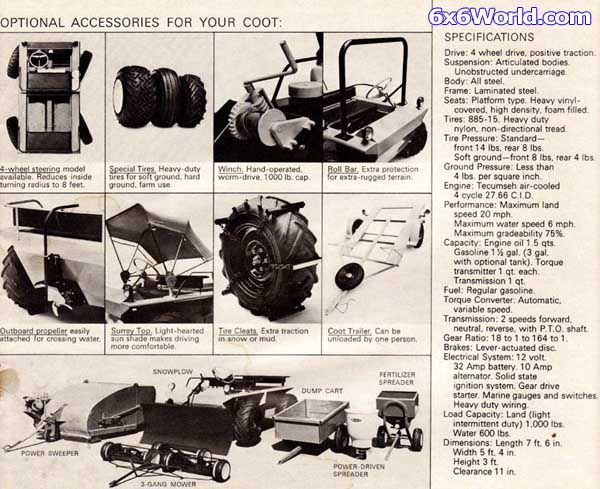
ATV trailers are listed with various weight ratings that each tell a different story. Understanding the difference between them is crucial for safe towing.
If you know the empty weight of your trailer, you can find the payload capacity by subtracting the trailer weight from the GVWR:
Payload capacity = GVWR – Trailer weight
 For ATV trailers, the GVWR indicates the trailer’s maximum combined weight, and all cargo can be. You will find the GVWR on your trailer’s VIN-plate.
For ATV trailers, the GVWR indicates the trailer’s maximum combined weight, and all cargo can be. You will find the GVWR on your trailer’s VIN-plate.GVWR = Payload Capacity + Trailer Weight

GCWR (Gross Combined Weight Rating) refers to the total mass of a vehicle, including all trailers.
As you can see from the comparison tables, the weight of ATV trailers varies quite a bit. There are a few main factors that determine the weight of different models of trailers.
Trailers designed to be pulled by an ATV are generally about half the weight of trailers designed to pull behind a car. Even the smallest ATV haulers/ utility trailers exceed the rated towing capacity of some of the smaller ATVs.
Even the smallest ATV haulers/ utility trailers exceed the rated towing capacity of some of the smaller ATVs.
As a general rule, you should not use an ATV to pull a trailer designed to be pulled by a car or truck.
The same general rule applies the other way round as well. ATV tow behind trailers is un general, not designed to be pulled by a car.
Besides the frame, the axle is the heaviest component on a trailer. Adding one more axle does increase the capacity of a trailer, but it does also add weight.
In many cases, you will find that you can tow a smaller amount of cargo in a single axle trailer than a dual axle due to the weight limit of your tow hitch.
The most common configuration for hauling one ATV is a 10′ to 12′ deck with a single axle. A full-size ATV is around 80 to 85 inches long. You need to make sure you have a large enough deck if you plan on hauling more than one ATV at the time.
Longer and wider trailers are heavier than a smaller trailer with similar construction. But the difference in weight may not as high as you think. The weight of the axle, drawbar, nosewheel, and lighting assembly can be the same even if you go up one size in bed size.
ATV haulers are typically made out of steel or aluminum.
In the early days of ATVs, there were no haulers specifically designed to carry ATVs. Most people just used a basic wood decked, heavy-duty utility trailer made out of solid steel.
Many still prefer using steel utility trailers to haul ATVs due to their robustness. The downside is that they are relatively heavy when empty.
ATVs are relatively lightweight vehicles that do not require the same robustness as a small excavator or other small but heavy machinery. Hardwood floors are needed to protect the trailer from steel excavator tracks, but not necessary for a rubber ATV wheel.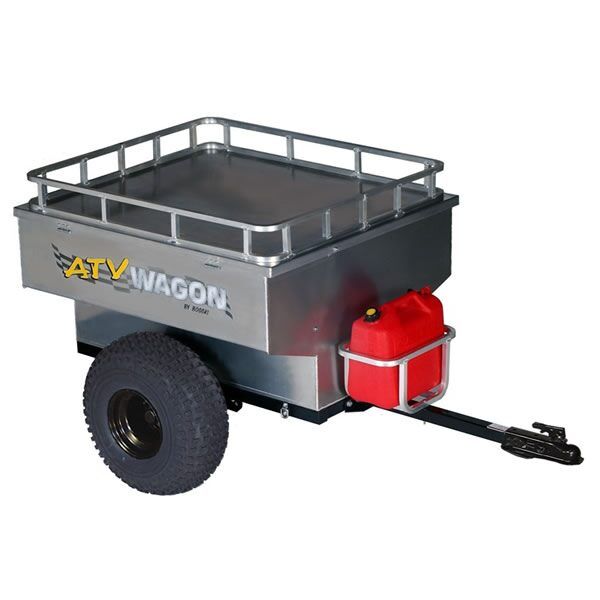
That’s why aluminum trailers have been and still are increasing in popularity for ATV hauling.
Aluminum is much lighter than steel and wood but is still a relatively strong material. A lighter weight trailer will give you better mileage and won’t require such a large car or truck for safe pulling.
With an aluminum trailer like the Aluma A8816, you may be able to tow one extra ATV when compared to a similar size steel trailer while maintaining the same combined weight.
ATV tow–behind trailers are often made out of steel tubing and steel sheets or mesh. The goal is to make a lightweight trailer that is still robust enough. In later years, we’ve seen a new type of trailer entering the market.
The frame and axles are still made out of steel, but the box can be made out of plastic or other composite materials. Plastic box trailers are great for camping and other situations where having a lightweight trailer is important.
Related: How Much Weight Can an ATV Carry? (Cargo and Rider)
Hi, I’m Haavard, the guy behind Boost ATV.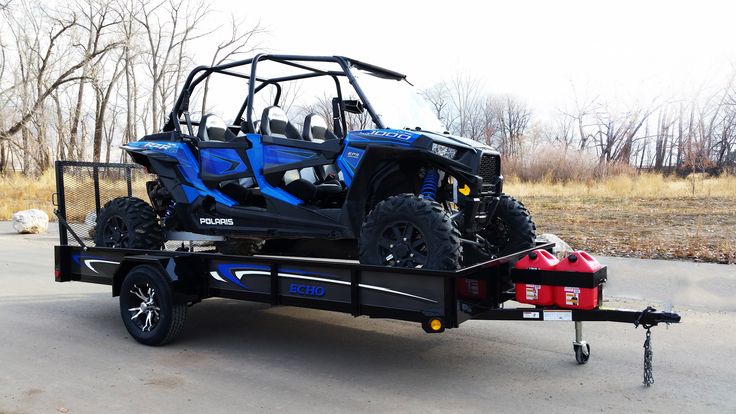 I made this site for sharing what I learned as an avid ATV owner and enthusiast. I hope it will help boost your ATV experience! Who am I?
I made this site for sharing what I learned as an avid ATV owner and enthusiast. I hope it will help boost your ATV experience! Who am I?
This site is owned and operated by Krislok Media, a limited liability company headquartered in Norway. BoostATV.com is a participant in the Amazon Services LLC Associates Program, an affiliate advertising program designed to provide a means for sites to earn advertising fees by advertising and linking to Amazon.com. This site also participates in other affiliate programs and is compensated for referring traffic and business to these companies.
Knowing the weight of an ATV can be an important factor in deciding which ATV to buy. The most obvious reason is to ensure you have capable means of moving the ATV. Is it light enough that it can sit in the bed of your truck or on your trailer? Can you haul it with your mini SUV or do you need to buy a truck? These questions may depend on the weight of your ATV.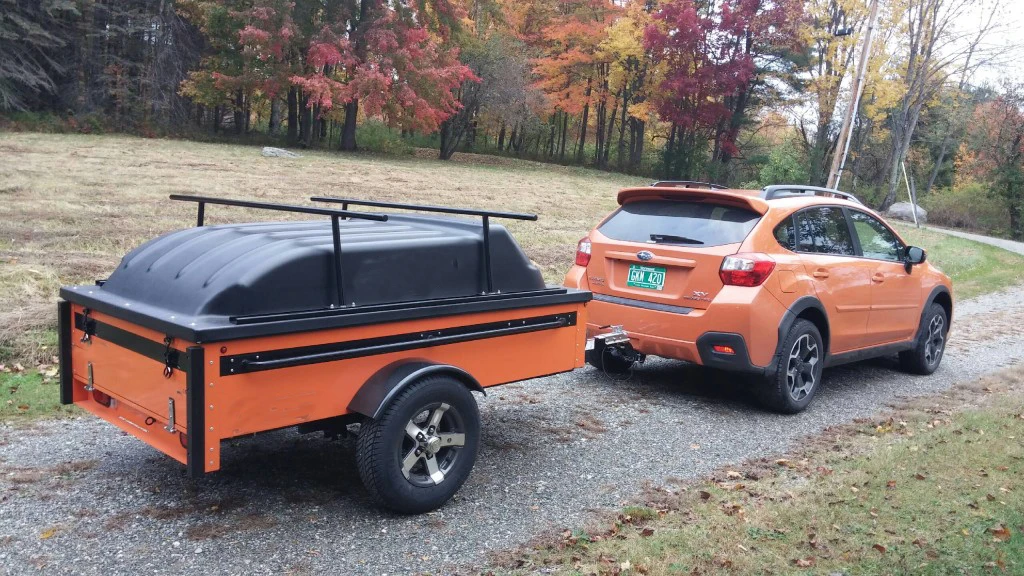 But, that is not the only reason you should be interested in the weight of an ATV. You want to make sure you are able to lift the front or rear end of your ATV or push it up an incline if necessary. If you weigh 120 pounds, you may not want to get stuck with a 900 pound machine. If you are going to be riding places where you could roll your ATV, there is a big difference between 300 pounds and 900 pounds rolling over you. Finally, the weight of the ATV is going to determine, to an extent, how much control you have and how sharply you can turn in some cases.
But, that is not the only reason you should be interested in the weight of an ATV. You want to make sure you are able to lift the front or rear end of your ATV or push it up an incline if necessary. If you weigh 120 pounds, you may not want to get stuck with a 900 pound machine. If you are going to be riding places where you could roll your ATV, there is a big difference between 300 pounds and 900 pounds rolling over you. Finally, the weight of the ATV is going to determine, to an extent, how much control you have and how sharply you can turn in some cases.
So what does an average ATV weigh? About 590 pounds or 268 kg dry weight.
But, the weight of the ATV you are looking at probably won’t be 590 pounds. The weight is going to depend mostly on the size of your engine (cc), but even within those sizes, there is a lot of variance. However, it is pretty safe to say a 90cc ATV is going to weigh quite a bit less than an 800cc ATV.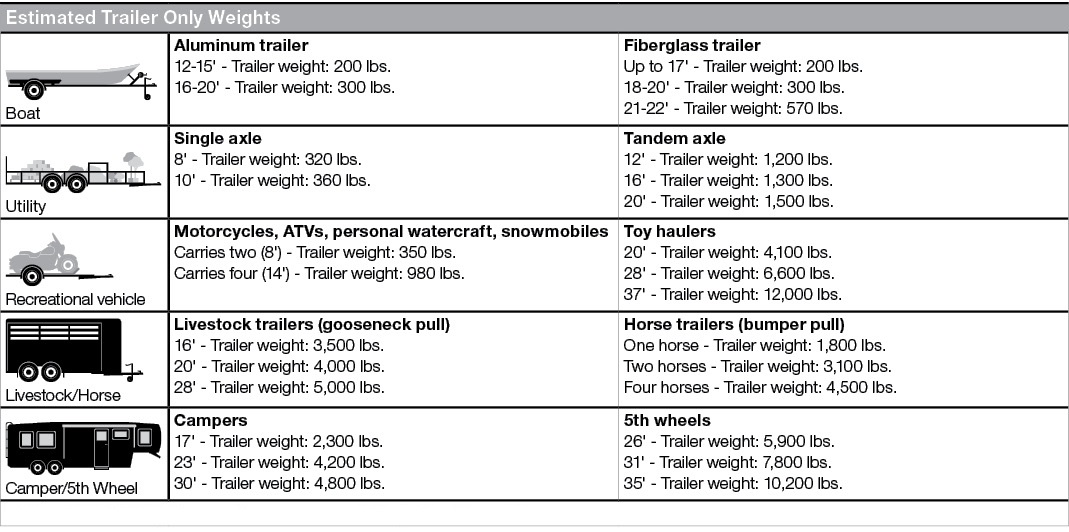 Finding the right ATV is going to depend on a lot of factors, including the weight, dimensions and engine power. You can find out all about different ATV sizes in our complete guide to ATV dimensions and if you need to figure out what size to buy, check out this awesome guide.
Finding the right ATV is going to depend on a lot of factors, including the weight, dimensions and engine power. You can find out all about different ATV sizes in our complete guide to ATV dimensions and if you need to figure out what size to buy, check out this awesome guide.
Below, you can find the most complete guide available on ATV weight based on engine class (by cc).
Wherever possible, the weight given is the dry weight. This is the measurement used by most manufacturers. It is the weight of the ATV as you would see it on the showroom floor, with no oil, gasoline or other fluids in it. Other manufacturers, such as Honda, use what is called curb weight, wet weight or ready to ride. This refers to the weight of the ATV with all standard equipment, all fluids and a full tank of gasoline. On an ATV, this won’t add a ton of weight and is not enough that it would impact your decision on buying an ATV.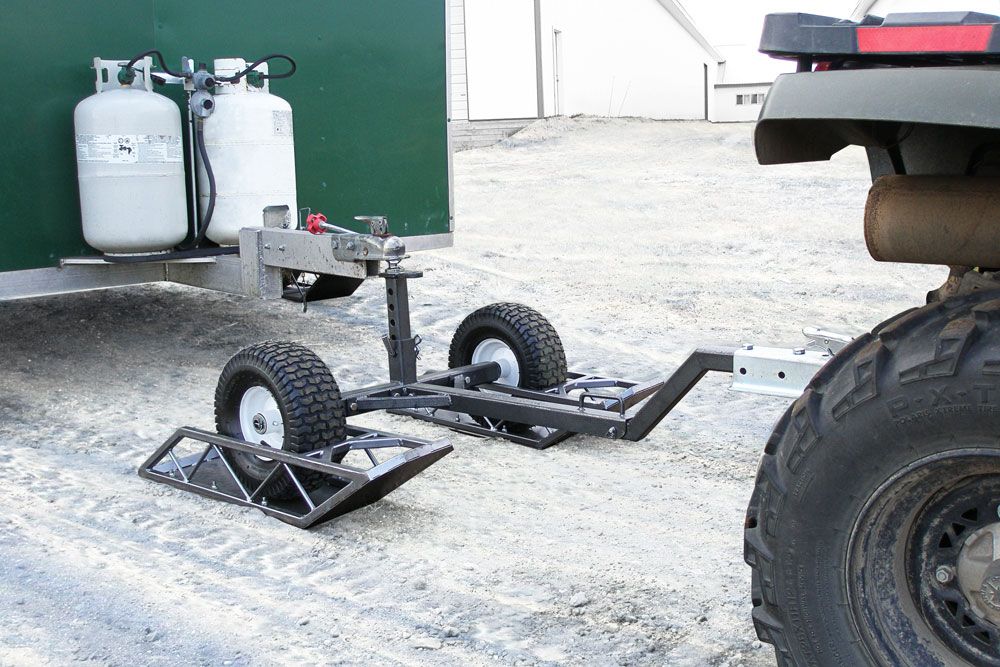 Finally, you may come across a listing for Gross Weight. This refers to the ATV and the total load it can carry including optional equipment and riders.
Finally, you may come across a listing for Gross Weight. This refers to the ATV and the total load it can carry including optional equipment and riders.
For each class of ATV, I found as many examples as I reasonably could and compared their listed weights to determine the average and any trends I mention.
The smallest entry-level youth ATVs are, of course, the lightest. The average weight of a 50cc ATV is about 215 pounds. The heaviest 50cc ATV I found was the Yamaha Raptor 50, which weighs 237 pounds. The lightest 50cc ATV I found was the Suzuki QuadSport Z50, which weighs less than me at only 174 pounds. Most of the ATVs I saw fell in the 210-225 pound range.
I could only find a few name-brand ATVs in the 70cc class. The average weight of those was about 250 pounds.
This is probably the most popular sized ATV for kids.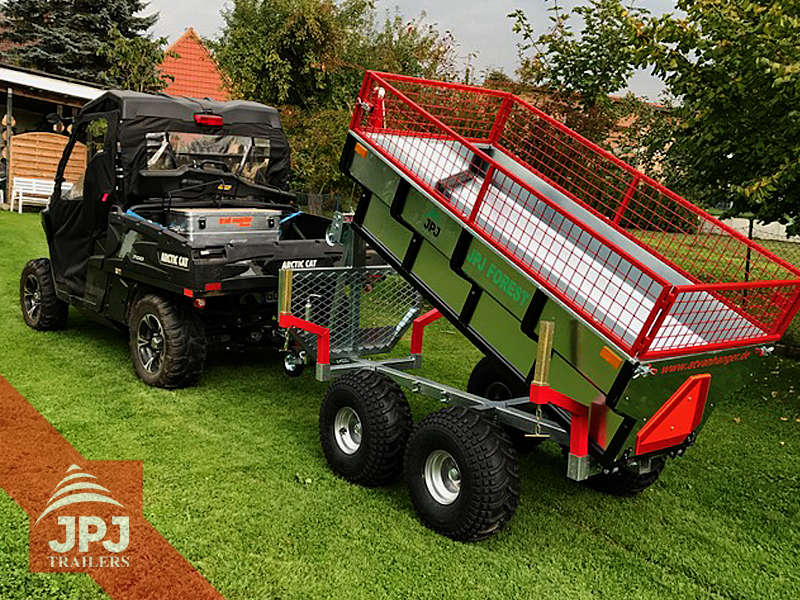 The average 90cc ATV weighs about 265 pounds. The largest 90cc ATV I found was the AlphaSports Daisy 90, which weighs 289 pounds. The lightest, by a single pound, was the Bombardier DS 90, which weighs 249 pounds. Most of the 90cc ATVs I saw were in the 250-260 pound range, with a few heavier exceptions skewing the average.
The average 90cc ATV weighs about 265 pounds. The largest 90cc ATV I found was the AlphaSports Daisy 90, which weighs 289 pounds. The lightest, by a single pound, was the Bombardier DS 90, which weighs 249 pounds. Most of the 90cc ATVs I saw were in the 250-260 pound range, with a few heavier exceptions skewing the average.
200cc is the class where we start getting into the bigger youth models, but there is not a huge selection at 200cc. The average 200cc ATV weighs about 365 pounds. That average is again skewed by an outlier in the super-light Yamaha Blaster, which only weighs 250 pounds. Most of the other 200cc ATVs were in the upper 300s or lower 400s, with the Polaris Saw Tooth topping the charts at 425 pounds.
The average 250cc ATV weighs about 410 pounds. The lightest, by a fairly wide margin was the Honda TRX 250EX, which weighs only 360 pounds. The heaviest 250cc ATV I found was the Yamaha Big Bear 250, which weighs 456 pounds.
The heaviest 250cc ATV I found was the Yamaha Big Bear 250, which weighs 456 pounds.
300cc is not a very popular class of ATVs so there weren’t many options. The heaviest 300cc ATV I found was the Polaris Hawkeye, which weighs 550 pounds. The lightest 300cc ATV I found was the Arctic Cat 300, which weighs 477 pounds. The average 300cc ATV weighs about 510 pounds.
The average 350cc ATV weighs about 490 pounds. This number was skewed downwards by the 375 pound Yamaha Raptor 350, which weighs 375 pounds. Most of the 350cc ATVs I saw were closer to, or over, 500 pounds. The heaviest 350cc ATV is the Arctic Cat 350, which weighs in at a relatively whopping 588 pounds.
At 400cc, we start getting into the more adult-sized ATVs. The average 400cc ATV weighs about 495 pounds. This is the lightest class where we really start seeing some huge ranges in weight with stark differences between sport and utility models. The lightest and heaviest 400cc ATVs are from Arctic Cat. The lightest is the Sport DVX 400, which weighs 372 pounds. The heaviest is the 400 4X4 Auto, which comes in at 645 pounds.
The lightest and heaviest 400cc ATVs are from Arctic Cat. The lightest is the Sport DVX 400, which weighs 372 pounds. The heaviest is the 400 4X4 Auto, which comes in at 645 pounds.
The average 450cc ATV weighs about 520 pounds, but there is a big difference between the sport and utility models in this class. The lighter sport models typically weigh less than 400 pounds. The lightest of which is the Yamaha YFZ 450, which weighs 350 pounds. The heavier utility models are 500-700 pounds. The heaviest I saw was the 696 pound Polaris Sportsman 450.
The average 500cc ATV weighs about 630 pounds. The two outliers bringing the average weight down are the Polaris Outlaw 500, at 425 pounds, and the Polaris Predator 500, at 405 pounds. Most of the other 500cc ATVs I reviewed weighed more than the average of 630 pounds. The heaviest 500cc model I found was the Polaris Sportsman 500 X2 EFI, which weighs 791 pounds.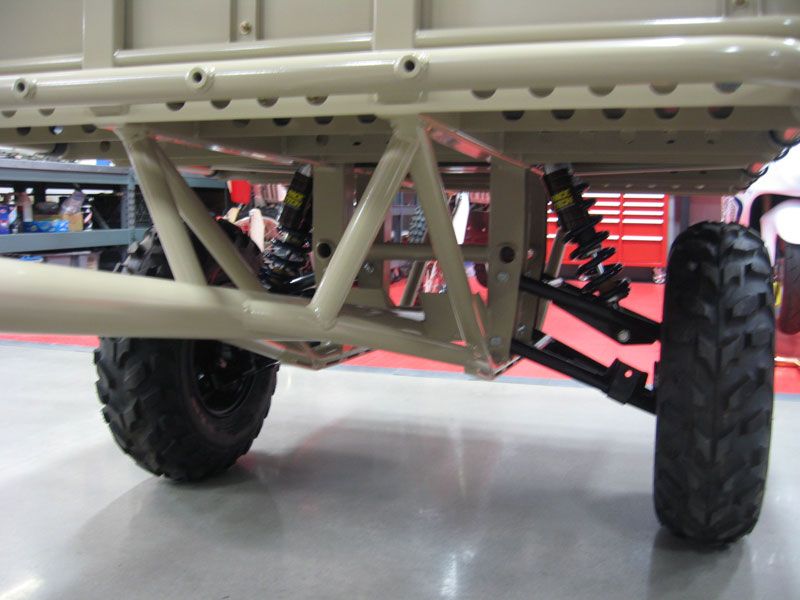 As you might be catching on, The various Polaris Sportsman ATVs are usually heavier than their counterparts.
As you might be catching on, The various Polaris Sportsman ATVs are usually heavier than their counterparts.
The average 650cc ATV weighs about 635 pounds. The heaviest machine I found at 650cc was the Arctic Cat h2 TRV Plus, which weighs in at 724 pounds. The lightest 650cc ATV I found was the Bombardier DS 650X, which wasn’t just the only 650cc ATV I found under 600 pounds, it was under 500 pounds, at just 494 pounds.
At 700cc, we see our biggest gap between the lightest and heaviest ATVS. The Yamaha Raptor 700R weighs in a shockingly light 396 pounds. On the other end, the Arctic Cat 700 Diesel weighs in at 809 pounds. With that wide spread, the average 700cc ATV weighs in at 645 pounds. While the Yamaha Raptor is by far the lightest, you can find a 700cc ATV at nearly any weight you want, with multiple models available in the 500s, 600s and 700s for pounds.
At 800cc, we are getting into the really big ATVs.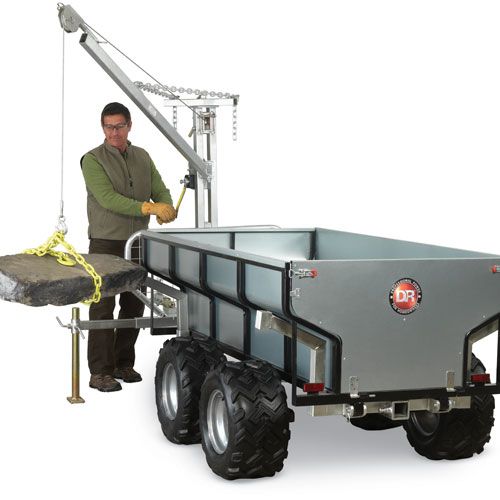 The average 800cc ATV weighs about 715 pounds. The Bombardier Renegade 800 is probably the only 800cc ATV you can find under 600 pounds, and it weighs in at 597 pounds. The heaviest of the bunch is the Polaris Sportsman 800 X2 EFI, which weighs 839 pounds. Most of the 800cc ATVs are going to be plus or minus 50 pounds of 700 pounds. Indeed, the average 800cc ATV weighs about 715 pounds.
The average 800cc ATV weighs about 715 pounds. The Bombardier Renegade 800 is probably the only 800cc ATV you can find under 600 pounds, and it weighs in at 597 pounds. The heaviest of the bunch is the Polaris Sportsman 800 X2 EFI, which weighs 839 pounds. Most of the 800cc ATVs are going to be plus or minus 50 pounds of 700 pounds. Indeed, the average 800cc ATV weighs about 715 pounds.
Finally, we get to the biggest of the bunch. The most powerful, and heaviest, ATVs out there are going to be the 1000cc ATVs. The average 1000cc ATV weighs about 840 pounds. At 1000cc, you just cannot find a light machine so there are a lot of considerations that need to go into purchasing such a large machine, other than just power. The lightest 1000cc ATV I could find was the Arctic Cat 1000XT, which still weighs 772 pounds. The heaviest 1000cc ATV I could find was the Polaris Sportsman XP 1000. At 927 pounds, that is an ATV you do not want landing on you.
If you are buying a new ATV, check out these accessories you may want, and of course, don’t forget to check out our very select recommended gear.
ATVARMORATVARMOR » Articles » ATV Trailers: Choosing the Best
03 Mar
Sooner or later, every ATV owner faces the question of how to transport it.
The most convenient option is to have your own trailer and carry an ATV in it. This is especially useful for those who often need to transport equipment and other goods.
We will tell you how to choose the right ATV trailer.
You can buy an ATV trailer in the Atvarmor showroom. We have a large selection of models with different characteristics, and we can help if you have any difficulties with the selection. We also sell additional components: awnings and frames for them, spare and support wheels, roofs.
close
Call
Article:
year
2020
Power
hp.
Total weight
165 kg.
Characteristics
View
R-181 ATV single axle trailer for ATVs is designed to carry various loads. With such an ATV trailer, transportation becomes more convenient and efficient, especially in adverse road conditions. Has increased maneuverability.
The strength of the body and the reliability of the structure, which the ATV trailer possesses, will ensure the safety of the transported cargo even in off-road conditions (rain, snowfall, loose soil). Therefore, an ATV convertible trailer for an ATV is an excellent solution for owners of any kind of country farms.
The ATV trailer has two large tread wheels, a robust metal body that is suitable for transporting various types of cargo - building materials, bulk materials, garbage, etc.
In addition to the main structural details, the R-181 ATV trailer has a load capacity of up to 385 kg! Such an agile and comfortable trailer will be a good addition to an ATV and will become an indispensable assistant in the country and home gardens.
Original parts catalog for R-181 ATV Trailer.